Stable isotope facilities
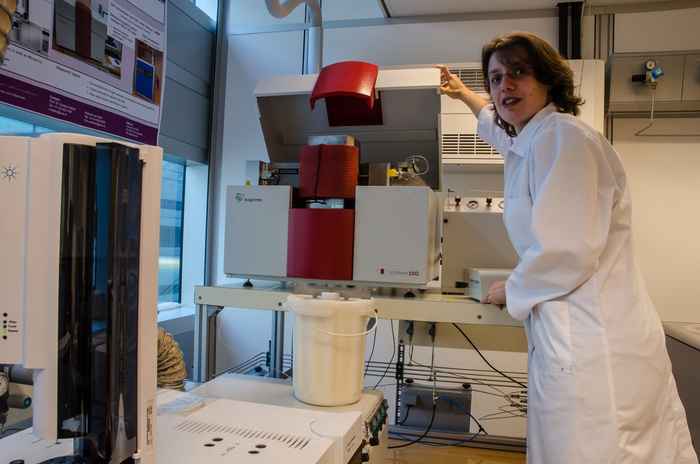
Isotope Ratio Mass Spectrometry (IRMS) detector
Our laboratory is equipped with 2 isotope ratio mass spectrometers (IRMS). An IRMS detector is a high precision mass spectrometer which can measure the in the natural abundant isotope ratio. Our systems are suitable of the measurement of light stable isotopes of carbon (12C/13C), nitrogen (14N/15N), hydrogen (1H/2H), oxygen (16O/18O) and sulphur (32S/34S). Both IRMS detectors can be coupled with different inlet instruments making it possible to analyze a broad range of sample types (solid, liquid, gas and compound specific analyses).

Both IRMS detectors in our lab are continuous flow isotope ratio mass spectrometers. The IRMS is different than conventional mass spectrometers because it uses a strong electromagnetic field to separate the isotopic different masses and is simultaneously detecting the ions with multiple collector analysis. These techniques give high accuracy and precision in the measurement of stable isotopes compared to other mass spectrometers.
-
Technical specifications
- Isoprime 100 (Elementar UK, Manchester, UK)
- Bio Vision (Elementar UK, Manchester, UK)
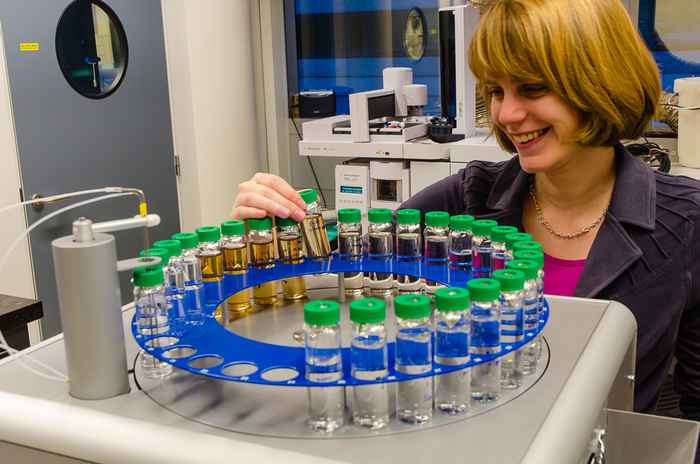
Inlet instruments
An inlet instrument in necessary for stable isotope analysis because an Isotope Ratio Mass Spectrometry (IRMS) detector can only measure samples that are in gaseous state. Most of our inlet instruments can be used both as a standalone instrument for quantitative analyses and can be coupled with IRMS for a combined quantitative and isotopic ratio analysis. The inlet instruments have been optimized for accurate and precise isotopic measurement.
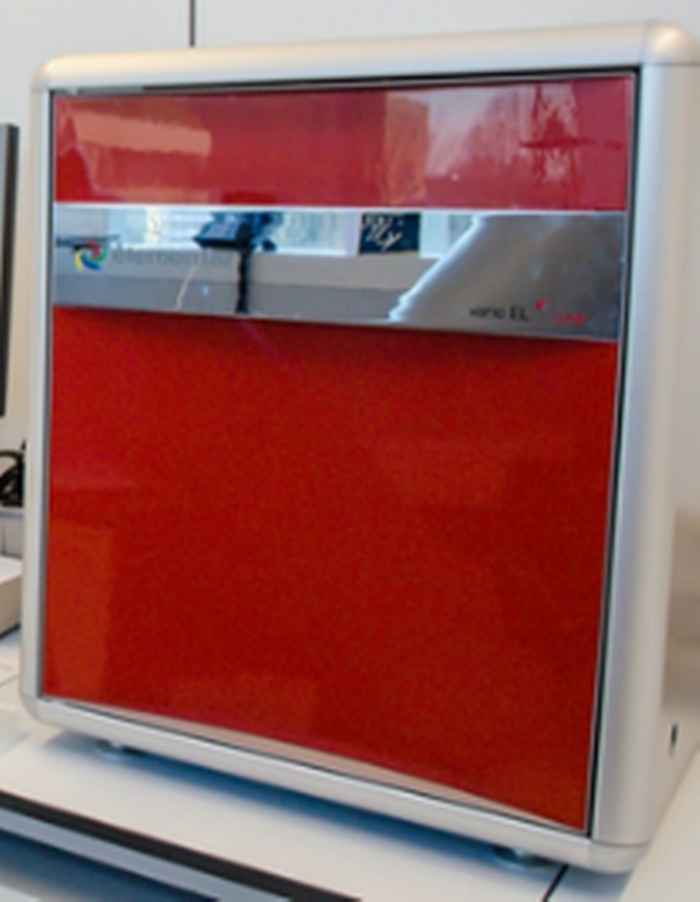
EA (Element Analyzer)
The elemental analyzer is a high temperature combustion unit used for the simultaneous quantitative analysis of the bulk carbon, nitrogen, sulphur, hydrogen and oxygen in solid samples. The combusted gasses are focused and transferred to the Isotope Ratio Mass Spectrometer (IRMS) for isotope ratio measurement.
-
Technical specifications
Vario Isotope (Elementar Analysesysteme GmbH, Hanau, Germany)

TOC (Total Organic Carbon Analyzer)
The Total Organic Carbon Analyzer (TOC) is a high temperature combustion system for the analysis of organic and inorganic carbon and total nitrogen in (soil) extracts or liquid samples like freshwater or seawater. Before Isotope Ratio Mass Spectrometry (IRMS) analysis, the combusted gasses pass through a focusing unit and are transferred to the IRMS for isotope ratio analysis. High precision (SD < 0.15‰) and accuracy (R2= 0.9997) is achieved with this TOC-IRMS system in 13C-DOC measurements. For this, various samples in a wide range of concentrations (0.2-150 mg C/L) and with different injection volumes (0.05-3ml) were analyzed.
-
Technical specifications
Vario ISOTOC Cube equipped with Low Concentration Module (LCM) for IRMS measurement (Elementar Analysesysteme GmbH, Hanau, Germany).
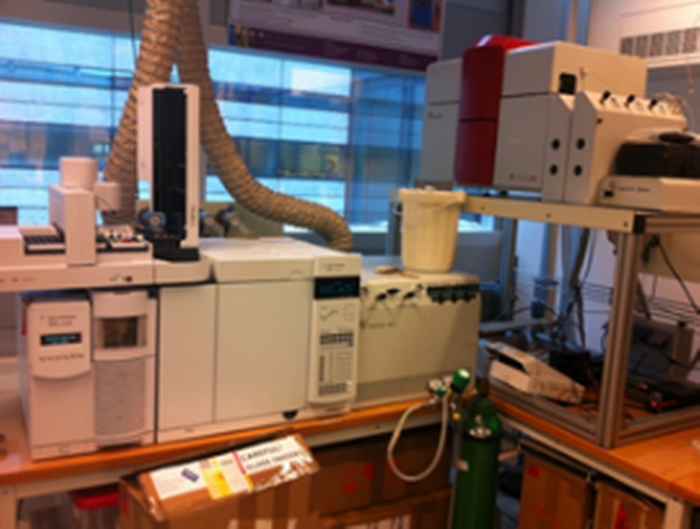
GC-FID/Mass Spectrometry
Our GC-(quadrupole) Mass Spectrometry system with PTV and split/splitless injectors, can be used as stand-alone GC-MS system with FID and MS detection or coupled to the Isotope Ratio Mass Spectrometer (IRMS) using a GC5 interface for compound specific isotope ratio analysis of carbon, nitrogen, hydrogen or oxygen.
-
Technical specifications
- Agilent 7890A gas chromatograph equipped with an Agilent 5975C MSD, (Agilent Technologies, Santa Clara, CA, United States)
- Isoprime GC5 interface (Elementar UK, Manchester, UK).
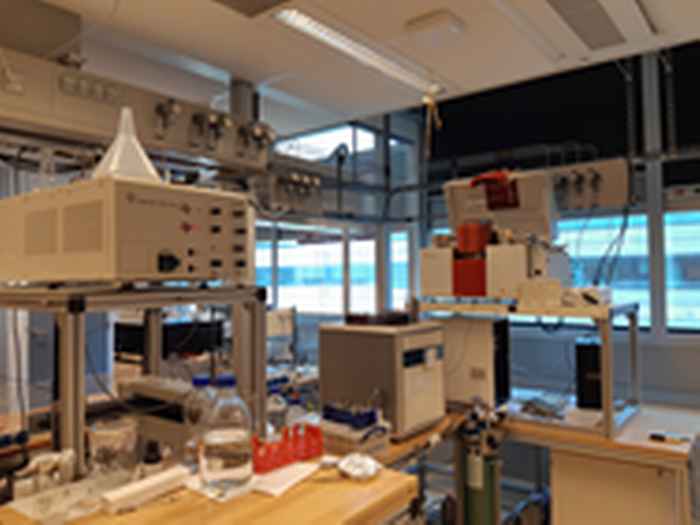
Trace gas
Our gas pre-concentrator can concentrate gasses such as CO2, CH4 and N2O from gas samples using cryogenic traps. The concentrated gas is then transferred to the Isotope Ratio Mass Spectrometer (IRMS) for the isotope ratio measurement of carbon or nitrogen. This technique can be a useful asset in e.g. incubation studies.
-
Technical specifications
Trace Gas (Elementar UK, Manchester, UK) equipped with a Gilson GX-271 autosampler (Gilson Inc., Middleton, United States).
Contact information
Please contact us for more information: IBED-lab-science@uva.nl